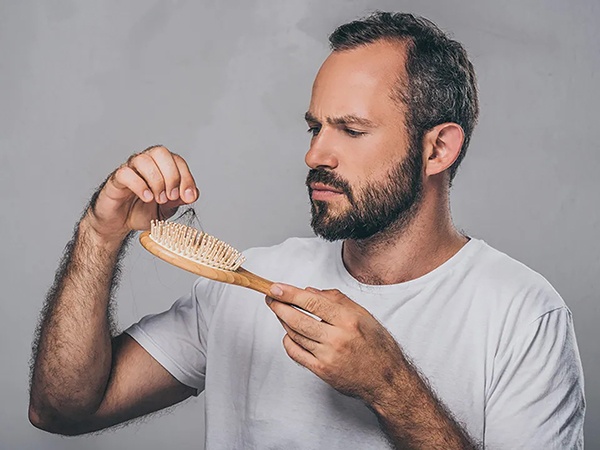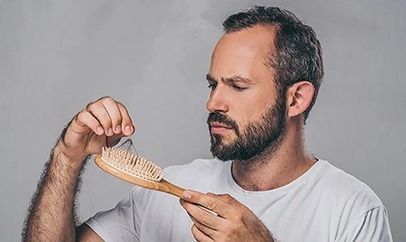
Hair loss is common in both men and women. If you have the balding gene, it is only a matter of years before your hairline starts to recede and you lose your beautiful locks of hair. This is devastating for most people as it does not help with self-esteem. Plus, if you were already used to your hair, it will make it a lot harder to adjust to having none. Luckily, you do not have to because there are many hair restoration techniques available to you. The most popular one is the Follicular Unit Extraction (or FUE).
Follicular Unit Extraction is a hair transplant procedure that sees professionals taking individual hair follicles from your skin and moving them to a place where hair is thinner or absent. This procedure is popular because it gives a more natural look than the Follicular Unit Transplantation (FUT) procedure.
It is also more convenient with minor side effects. The success of this procedure is attractive too. The transplanted hair will often start to grow back in three to four months. About 10 to 80 percent of the transplanted hair grows back. Keep reading to learn more about what this process has in store for you.
Why Get Follicular Unit Extraction?
Choosing an FUE transplant will transform the hair transplant experience for you. If you are a little worried or on the fence about picking this method, consider the few reasons why you should.
- Less intrusiveness. The FUE procedure is minimally invasive, which is one reason it is popular among professionals in the industry. This non-invasive procedure rarely touches nerves and blood vessels. This helps avoid all the common issues of FUT transplants, such as numbness of the scalp and pain.
- Minimal scarring. Another reason why professionals prefer this hair transplant method is because it leaves minimal scarring. The competing procedure, the FUT, requires cutting a strip of skin from the back of the scalp then implantation of microscopically dissected follicles into the area. This leaves a huge scar that will require months of healing. With FUE, you do not have to worry because the process is minimally invasive, so barely any scars.
- Long-lasting results. An FUE transplant will give you better and long-lasting results. With just a few grafts, you can enjoy hair follicles that grow and age gracefully. This is because the hair follicles will spend less time outside the body, plus the technique is non-invasive, giving your scalp a better chance to recover and grow the hair.
- More hair with each graft. If you have a good surgeon, you can expect more hair with FUE transplants. This is because the FUE procedure lets the surgeon select follicles without damaging any surrounding follicles. There is a much lower rate of follicle injury. Quicker recovery time. Lastly, FUE transplants give you a quicker recovery time. You will be back to your routine by the next day, and in just two weeks, you will enjoy a full recovery. In between these two weeks, you will return to the clinic for stitches and staple removal.
Procedure for FUE Hair Transplant
The FUE transplant restores hair by replacing old follicles that do not grow hair with new ones that can grow hair. After the transplant, the follicles will receive nourishment from blood vessels then start to grow hair in the area with balding or thinning hair. Here is how the procedure goes:
- Preparation. The surgeon will shave down two areas; where they will harvest the follicles and where they will transplant the follicles. As you can tell, this provides a clean canvas, making extraction and transplanting easy.
- Hair follicle removal. Next, the surgeon will use a micro-punch tool to remove hair follicles from the skin. This is after they have administered medicine to numb the harvesting and transplant areas. Often the micro-punch will leave small dots that your growing hair will cover well.
- Transplant. Next, the surgeon will clean the transplant area, ensuring that it is numb for transplanting to begin. The professional will make a series of small incisions with a needle or any other sharp tool to expose where the follicles will go. The surgeon will then transplant the areas efficiently.
- Bandage. Finally, the surgeon will clean and bandage the areas for recovery.
What to Expect During Recovery
After the surgery, you can expect tenderness on the scalp. You will also notice some swelling, discomfort or pain. This is all normal, and you can use over the counter painkillers to ease the pain. Also, your doctor will advise keeping bandages on for two to three days. The surgeon may also prescribe anti-inflammatory drugs and antibiotics to help with any infection or risk of it. However, you should be back to your routine in 3 to 5 days.
2 to 3 weeks after the surgery, the transplanted hair will fall out. However, in a few months, you will notice new growth. For most people, it takes 3 to 9 months to see these signs. You could also speak to your surgeon about hair-growth stimulating supplements to improve growth after transplantation.
Care Instructions after Surgery
To promote good growth and prevent the risk of infection, surgeons advise the following simple instructions:
- Avoid strenuous physical activity for the next week or so to avoid putting pressure on your scalp.
- Do not wash your hair (or shower depending on the area that receives the transplant) for at least three days. Your scalp is sensitive, so it does not need any more pressure.
- When you start washing your hair, switch to a mild or gentle shampoo. Also, use gentle motions to clean your hair to avoid hindering the healing process.
- Avoid combing or brushing your hair for the next three weeks or so. Brushes and combs are a bit abrasive and will affect the healing process of the transplant.
- Do not wear any clothes or accessories covering your head (hats, hoodies, beanies, etc.) until the doctor approves it.
- Only use hair-growth supplements or oils as recommended or advised by a doctor. Self-medication could do more harm than good, so always consult your surgeon.


